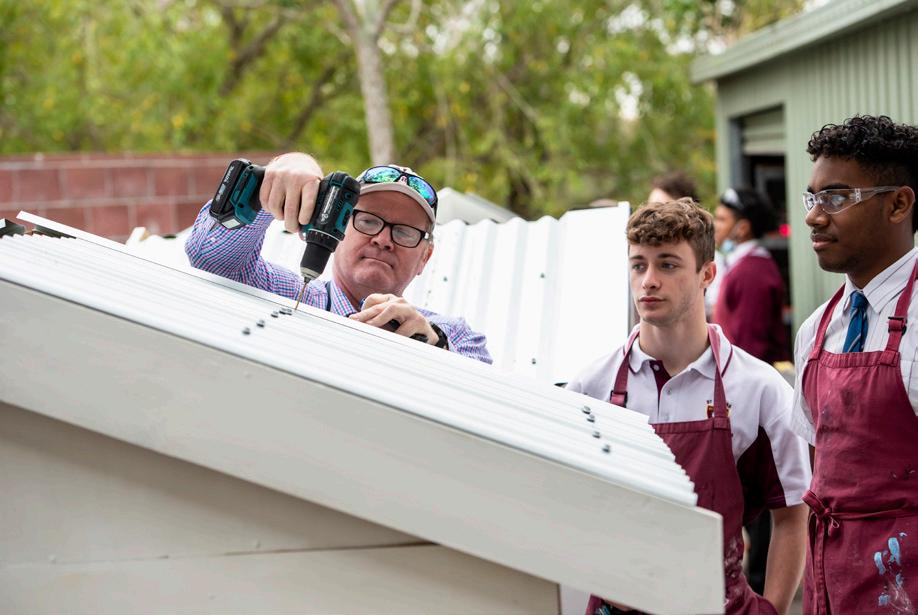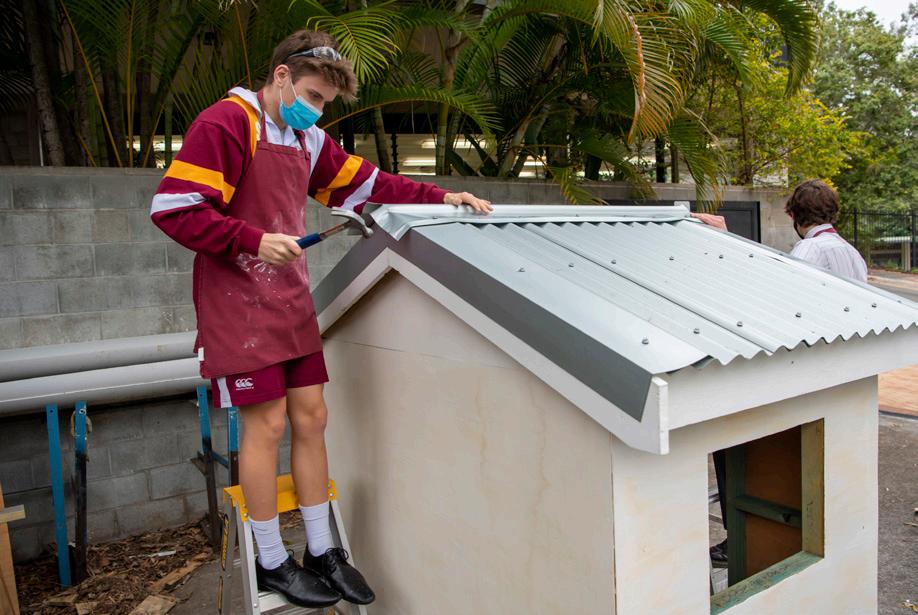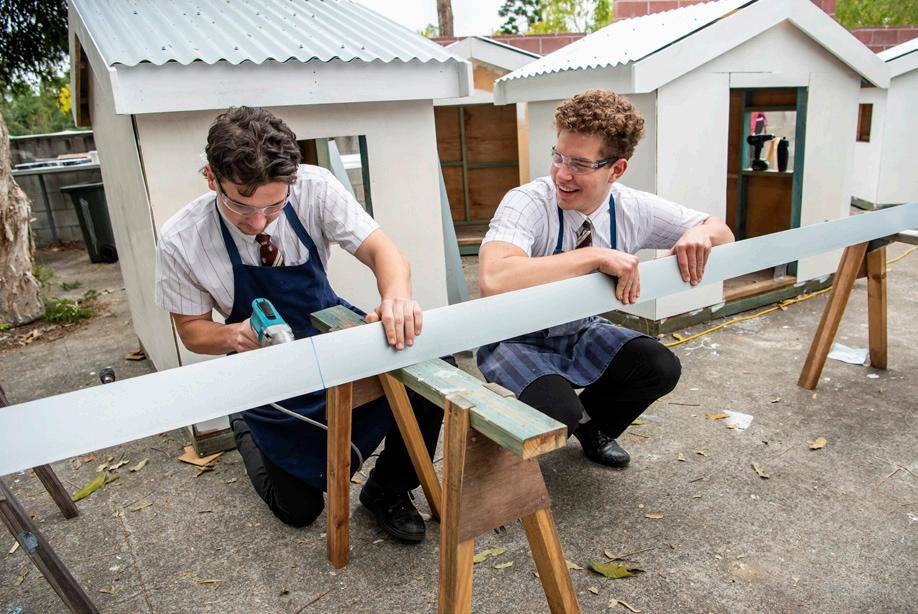
5 minute read
Construction | Building our future
CASSIE TWEMLOW | Communications & Marketing Officer
Students entering their Senior Years have the option to chose from various ATAR and/or VET subjects if pursuing the mainstream academic courses. One VET subject offered here at St Peters is Construction. Not only do students learn the basics about the construction industry, they get hands-on experience using tools and acquiring skills they wouldn't otherwise learn in a classroom.
Being part of the St Peters vocational education and training (VET) subject list for the last 24 years, Construction is offered to students in Years 11 and 12 who may seek a more hands-on career.
Design & Technology Teacher, Mr Scott McCarthy, has been teaching Construction at St Peters intermittently over the last 17 years. “It’s aimed at being a general introductory course to construction,” Scott explained when I spoke to him in April.
“There are 11 competencies— eight core and three elective subjects —and it’s aimed at the carpentry side of the industry, with some welding and concreting,” he clarifies.
The course aims to develop competencies relevant to construction industry practices including introducing students to basic industry knowledge and skills applicable to the three sectors within the Building and Construction Industry (residential, commercial and civil). Most students elect Construction in conjunction with their other five ATAR subjects or as an alternative-type subject to balance their subject load.
Scott explained that St Peters gets both ATAR ineligible and eligible students, the latter of whom, “enjoy the freedom of a practical based course that is not as academically draining on their time,” as mainstream ATAR courses can be.
The class sizes are on the smaller size – averaging 14 students in each Construction class – so students are offered more one-onone experience.
“It’s also to do with the nature of the subject,” Scott told me. Because students are regularly using machinery and tools “there needs to be less students for health and safety reasons as well.”
As part of the two-year VET course, students gain a Certificate I in Construction qualification which ‘provides an introduction to the construction industry, its culture, Working in a team occupations, job and showing roles and workplace initiative are what expectations’ (www. training.gov.au).
The course is built around a basic construction project looking for someone where students with employability cover essential work skills and is keen." health and safety requirements, the industrial and work organisation structure, communication skills, work planning, and basic use of tools and materials.
One project students work on is a child’s cubby-house. Classmates team up to see through the woodworking project from conception to completion, measuring and constructing the 4m2 weather-proof cubby.
This element of “working in a team and showing initiative are what I really push on the kids because if they follow through and want to become apprentices, employers are looking for someone with employability skills and is keen,” said Scott.

However, Scott also says that in the last few years school-leavers are less inclined to take up an apprenticeship because they don’t like the thought of starting at the bottom.
It’s unfortunate but, “they don’t want to earn the money that first and second year apprentices earn. But, if they can stick out the four years, there are so many opportunities opening up [in the sector] that mean you can go anywhere once you have your certificate.”
By ‘anywhere’ Scott isn’t joking. “My cousin works in the mines—he's a plumber by trade—but now he’s got a business purifying water and putting in sewage plants for the defence force and mines,” Scott illustrated. Overseas, into the mines, defence force, big business or sole-trader - there is no limit to what you can do once you are qualified.
But if the ‘four years for the rest of your life’ isn’t enough incentive, students can at least leave the Construction course at school with some basic skills and a ‘white card’.
“One of the Units of Competency to complete is ‘Prepare to work safely in the construction industry’. Once achieved, students are issued with a general construction induction training card (previously called a white card) so that you can enter a job site,” says Scott. This is a nationally recognised qualification that all engineers, architects and tradesmen are required to have to enter a building site prior to site induction.

2021 Seniors in Mr Scott MCarthy's Construction class working on their cubby-houses.
And even if you’re not sure what you want to do when you leave school, or have more lofty ambitions, Scott has feedback from other sources.
“The Project Manager on the Cross River Rail said to me last term that often their best engineers on the project have done a trade first, then an engineering degree.”
The skills on the Construction course are largely acquired through a variety of practical design projects completed in class. However, Scott explains that soft skills like “problem solving, communication, teamwork and being able to work with a broad range of people,” are key to being successful within the industry.










